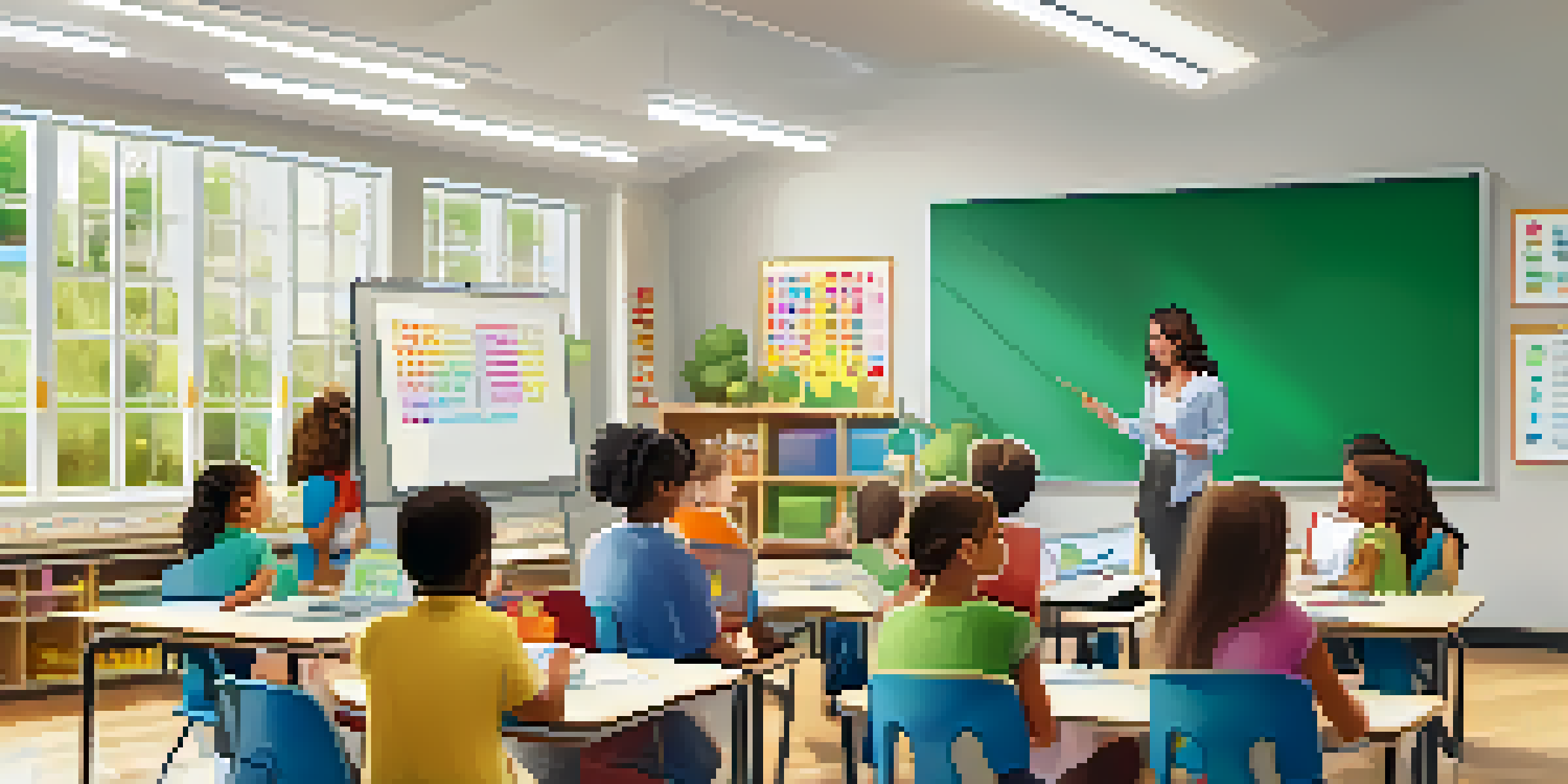Investigating Parental Attitudes Towards Blended Learning

Understanding Blended Learning: A Parent's Perspective
Blended learning merges traditional face-to-face education with online resources, creating a flexible learning environment. Parents may find this approach appealing as it offers their children the chance to learn at their own pace. However, understanding what blended learning truly entails can be daunting for some. Parents play a crucial role in supporting their children’s education, so their perceptions of blended learning are essential to explore.
Technology is best when it brings people together.
Many parents may associate blended learning with technology, leading to concerns about screen time and its impact on children. This prompts important questions: Do they feel comfortable with their children using technology for learning? Do they believe it enhances or hinders educational experiences? These questions are vital in understanding how parental attitudes shape the acceptance and implementation of blended learning in schools.
Additionally, the success of blended learning often depends on parental involvement. When parents are informed and engaged, they can effectively support their children’s learning journey. Thus, investigating these attitudes can provide insights into how to bridge the gap between traditional and modern educational practices.
The Role of Communication in Shaping Attitudes
Effective communication between schools and parents is key in shaping perceptions about blended learning. Schools that provide clear information about the benefits and logistics of blended learning can foster a positive attitude among parents. Regular updates and feedback channels allow parents to voice their concerns and suggestions, creating a collaborative atmosphere.

Parents often appreciate transparency regarding how blended learning is implemented in the classroom. When they understand how technology complements traditional teaching methods, their confidence in the system grows. For instance, sharing success stories from other parents or students can help reinforce a positive outlook on blended learning.
Parental Involvement is Key
Active engagement and support from parents significantly enhance the effectiveness of blended learning.
Moreover, communication helps demystify any misconceptions surrounding blended learning. When schools actively engage with parents, they can dispel myths and provide evidence-based information, leading to a more favorable perception. This dialogue not only reassures parents but also helps in building a supportive community around the educational framework.
Exploring Concerns Parents Have About Blended Learning
While many parents are open to blended learning, some harbor concerns that need addressing. A common worry is the potential for decreased social interaction among students. Parents often fear that too much online learning might lead to isolation, undermining essential social skills that are developed in a traditional classroom setting.
The greatest gift you can give your children is your time.
Another concern revolves around the effectiveness of blended learning compared to conventional teaching. Parents may question whether their children are receiving the same quality of education or if the online components dilute learning experiences. Understanding these concerns is critical for educators who wish to promote blended learning effectively.
Additionally, parents may worry about the accessibility of resources and technology. Not every family has equal access to devices or a reliable internet connection, which can create disparities in the learning experience. Addressing these concerns through equitable solutions is vital for the success of blended learning programs.
The Impact of Parental Education on Attitudes
A parent's level of education often influences their attitudes towards blended learning. Generally, parents with higher educational backgrounds tend to embrace innovative teaching methods more readily. They may be more familiar with technology and its educational benefits, leading to a more positive perception of blended learning.
Conversely, parents with limited educational experiences might struggle to understand blended learning's value. This gap can lead to skepticism, making it essential for schools to provide supportive resources and information. Offering workshops or informational sessions can empower these parents and enhance their understanding.
Communication Builds Trust
Clear communication between schools and parents helps to demystify blended learning and fosters a positive perception.
Moreover, parents who have experienced blended learning themselves, whether in their own education or through their children, may have a different outlook. Their firsthand experience can shape their perceptions positively or negatively, depending on their individual experiences with this educational approach.
Cultural Influences on Parental Attitudes
Cultural background plays a significant role in shaping parental attitudes towards blended learning. Different cultures have varying beliefs about education and technology, influencing how parents perceive modern teaching methods. For instance, some cultures may prioritize traditional teacher-led instruction, viewing blended learning as a deviation from proven practices.
In contrast, cultures that embrace technological advancements may be more supportive of blended learning. Parents from such backgrounds might see the integration of technology as a step toward preparing their children for a digital future. Understanding these cultural nuances is vital for educators aiming to foster acceptance of blended learning across diverse communities.
Additionally, schools can benefit from incorporating culturally relevant content into blended learning programs. This approach not only respects diverse backgrounds but also encourages parental involvement by connecting the curriculum with parents’ values and expectations.
Engaging Parents Through Training and Resources
To improve parental attitudes toward blended learning, schools can offer training sessions and resources. By equipping parents with the skills and knowledge they need, schools can empower them to support their children’s learning effectively. Workshops on using educational technology or understanding blended learning methodologies can make a significant difference.
Providing resources such as guides, FAQs, and access to online platforms can also alleviate concerns. Parents who feel confident navigating the blended learning environment are more likely to endorse it positively. This proactive approach can help diminish the anxiety surrounding new educational practices.
Cultural Context Matters
Cultural beliefs influence parental attitudes towards blended learning, making it essential for educators to understand these differences.
Moreover, creating a community where parents can share their experiences and tips can foster a sense of belonging. When parents connect and support each other, it enhances their overall attitude towards blended learning, making it a more accepted and embraced educational model.
Looking Ahead: Future Trends in Parental Attitudes
As education continues to evolve, so will parental attitudes towards blended learning. With the increasing integration of technology in various aspects of life, parents are likely to become more accustomed to digital learning environments. This shift may lead to greater acceptance and support for blended learning initiatives.
Moreover, as more research emerges demonstrating the effectiveness of blended learning, parents may feel more confident in its benefits. Schools that highlight success stories and positive outcomes will help reinforce this trend. As families see improved academic performance and engagement, their attitudes may shift towards a more enthusiastic embrace of blended learning.

Ultimately, fostering strong partnerships between educators and parents will be crucial in shaping future attitudes. By engaging parents in meaningful ways and addressing their concerns, schools can pave the way for a more supportive and collaborative approach to blended learning.